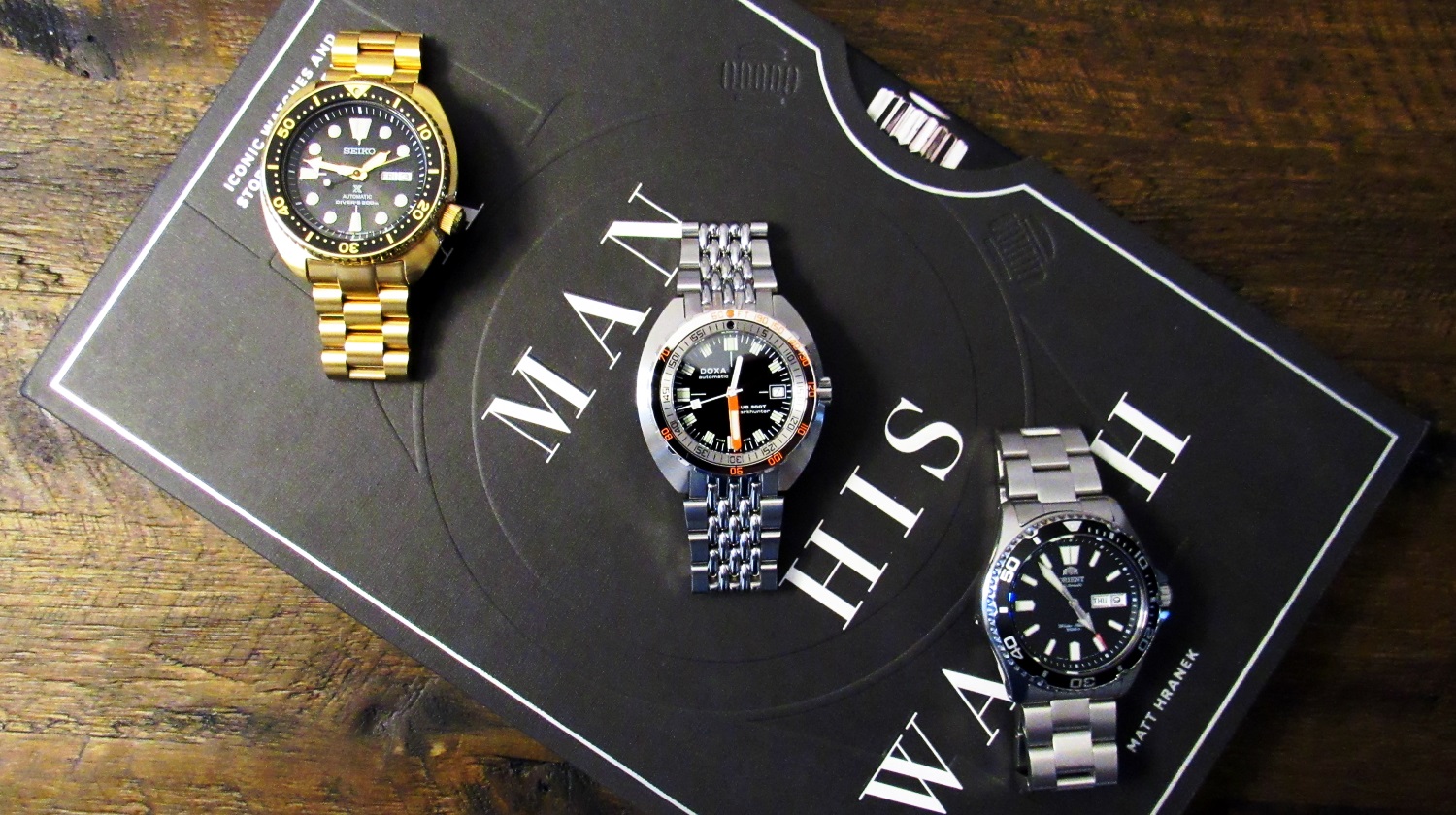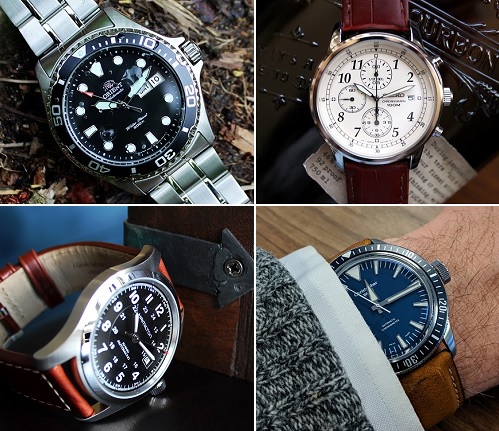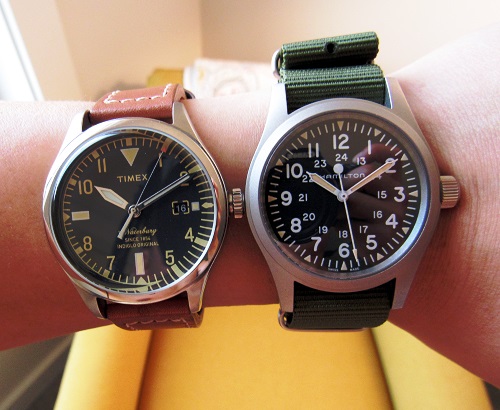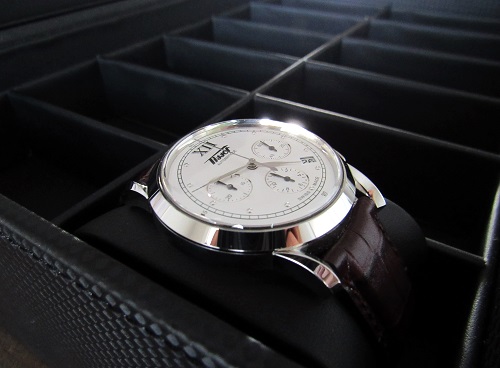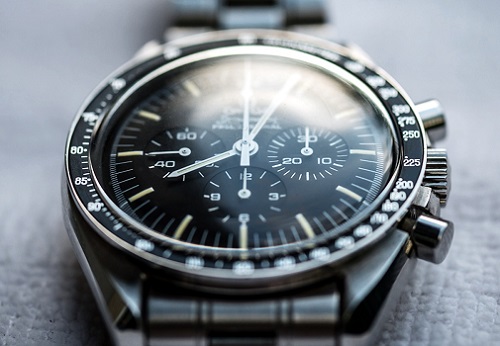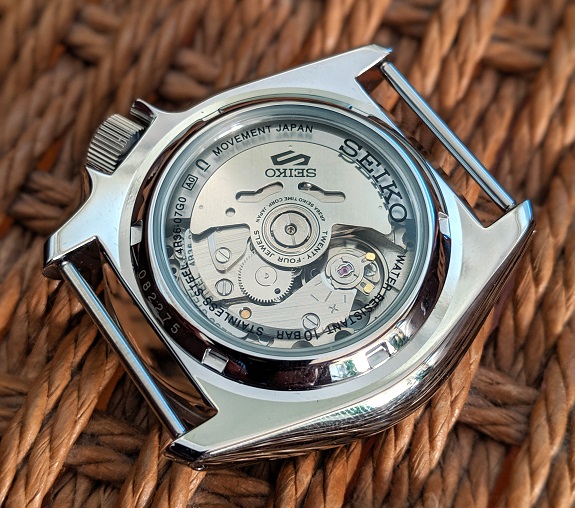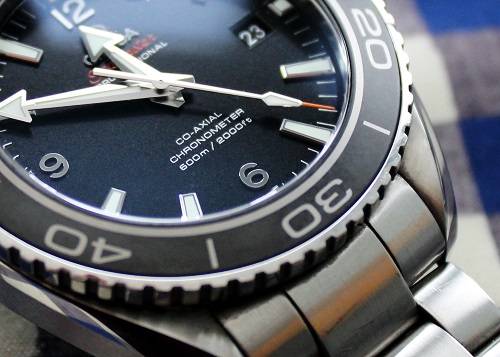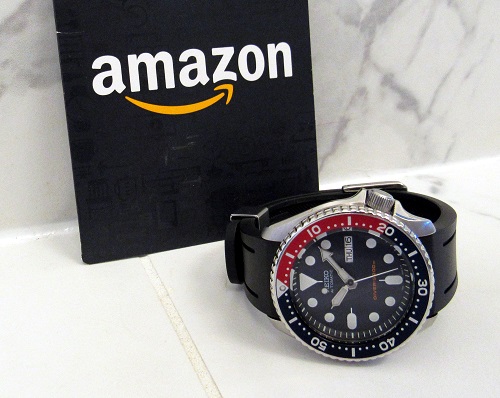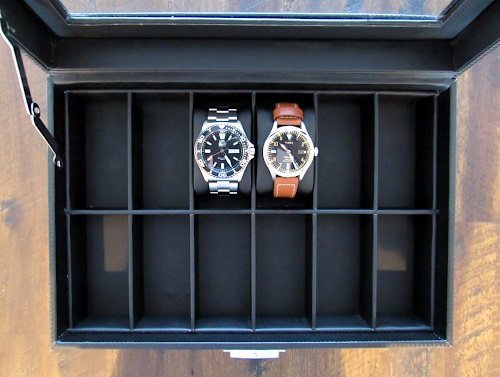Of all the things to collect, watches just might be one of the most satisfying. There’s something special about having the time on your wrist in a tangible combination of engineering and art. There are so many opinions on what a watch should or shouldn’t be that it can be difficult to figure out what belongs in your own personal collection. For anyone just starting out, here are 10 tips to hopefully help break it down as you navigate your watch collecting journey.
Know your Type(s)… or start to figure it out
- Orient Ray II – $125.40
- Seiko SNDC31 Chrono – $100.50
- Hamilton Field Automatic – $381.61
- Christopher Ward C65 Dartmouth – $910
There are tons of categories and subcategories of wristwatches. A good place to start is learning about the different types of watch movements, as well as style categories.
Movements: There are two basic types: Quartz (battery powered) and Mechanical (gears and wound springs). Mechanical can further be divided into hand-wound vs automatic movements. Automatics are powered by the wearer moving their arm throughout the day. Some automatic movements can also be hand wound!
Styles: There are too many types to list, but many would break them down like so:
- Dress watches – Sleeker and slimmer. Usually worn for formal events
- Dive watches – High resistance & traditionally used for underwater use. Although most wear them almost everywhere now.
- Field watches – Military inspired
- Pilot watches – used by aviators
- Chronographs – Has a stop-watch feature, and often stylistically dips into the field, pilot and even dress categories
So which do you prefer? Quartz field? Mechanical Dive? It’s a lot to all take in. But remember that style is subjective. What you like is what you like. And that’s plenty good enough.
Know your measurements, ya big lug
- 38mm Timex Waterbury Red Wing – out of production (lug-to-lug 44mm)
- 38mm Hamilton Field Mechanical – $395 (lug-to-lug 47mm)
Just like with your clothes and shoes, it’s important to know your size. Many people will advise you to measure the circumference of your wrist and then consult some magic chart to find out the “appropriate” watch diameter for your wrist. But like suit jacket lapels and trouser tightness, these things expand and contract over time. I personally find that wrist width and watch lug-to-lug dimensions are far better size indicators. The lug-to-lug length (not to be confused with lug width) is basically the overall length of the watch case measured from lug tip to lug tip. Shown above are two 38mm in diameter watches, on a 6.25″ wrist. The Timex has a lug-to-lug of 44 mm,while the Hamilton has a lug-to-lug of 47 mm. There is a noticeable difference. Bottom line? It’s personal preference. In my opinion, as long as the watch isn’t physically too large to fit on your wrist, feel free to wear it.
Cover all of your (two) bases… dress & casual
Some guys (especially college students) have a seemingly infinite number of sneakers… but no dress shoes. During casual hangouts they have a plethora of options, but when it comes time to dress nicely for a formal event or job interview, they are suddenly left with nothing to wear on their feet. The same can be true with watches. Believe it or not, you only need two watches to have a well-rounded collection: a dress watch and a casual watch. The dress watch should be elegant, slim enough to fit under a dress shirt sleeve, and is often (but not always) worn on a leather strap. The casual watch can be larger in size and sportier in nature. Decent water resistance and a water resistant strap or stainless steel bracelet are bonuses as well. With just these two watches, you will be well equipped for any and every situation.
Don’t buy a watch just to fill up your watch box
John Mayer (a huge watch nerd, among many other claims to fame) was once asked if he had any watches that he regretted buying, and he responded, “Yeah, the first 12 watches.” When you first start collecting, it’s all too easy to get overexcited. You’ve done your research and just bought a watch box that you can’t wait to fill. Never buy a watch simply to fill out your collection, it’s a sure recipe for disaster, and besides, careful curation is part of the fun. Buying a watch to fill a spot instead of buying it because you absolutely love it will without a doubt leave you disappointed.
The pride of price… the price of pride.
- Omega Seamaster Planet Ocean – $4495
- Seiko SKX 007 – $334 (or, 7.4% the cost of the Omega)
Nothing frustrates many of us more than seeing a watch forum post along the lines of “Just Bought My First Real Watch!” and the watch in question has a price tag of $5,000+. Also frustrating? Seeing any watches under $10,000 described as “affordable.” What planet are these people on? The idea that only watches worth four figures are “real” or worthwhile plagues the watch community, and is a key reason that watch collecting is seen by many as insufferable and snobby. Great watches can be found at any price point. Heck, the legendary Casio F-91W (a dependable and legendary digital watch) can be had for literally $5. Don’t be fooled into thinking that you need to shell out 10 percent or more of your annual salary for a “real” watch, when you can wear icons on your wrist for the price of a meal at McDonalds. That being said,
Don’t always settle for less
- Omega Speedmaster – $4750 (pre-owned)
I know, I know. This sounds hypocritical. But loving a watch just because of its high price (and associated status) is not the same as truly loving a watch for what it is despite its high price. In the latter instance, it may be better to save up for that grail timepiece than settle for a lesser version of the real thing. Many of us at some point during our watch collecting journey will find a perfect watch that is way out of our price range. So instead of saving up and purchasing your dream watch later, you scour the internet and find a cheaper version that you can have now. It has at least some of the qualities/aesthetic of the watch that you covet so dearly. And you buy it. For a while it does the trick, you feel happy with your purchase and wear it gladly – until the day you realize that you still want the real thing and end up buying it later anyway. It has happened to the best of us. Repeatedly.
Mechanical isn’t necessarily king
There’s a general consensus among watch nerds that mechanical watches are “better” (whatever that means) than quartz watches. Mechanical timepieces are undoubtedly more complex and much more difficult to design and manufacture than quartz watches, but are they really better? I’d say no, they’re just different. As fascinating as they are, there are many ways in which quartz watches are superior. For one, they are far more accurate. Even inexpensive quartz watches can keep time as well as any Swiss manufactured mechanical watch. They also require less maintenance; a simple battery swap will keep your quartz watch running for years. Mechanical pieces, on the other hand, require good money invested into regular maintenance every 3-5 years (depending on the model), and because of their more fragile nature, repair costs for simply dropping your watch can be pricey. We all love the romanticism of a mechanical movement, but in reality quartz movements are more modern and reliable. Next time you hear a watch snob express his or her disdain for quartz watches, be sure to ask them if their car has power steering. I’m betting it does.
Know that specs can be hugely overrated
Watch manufacturers love to advertise the engineering specs of the watches that they produce, and we consumers eat it all up. As great as things like precise accuracy and phenomenal water resistance are, it’s best to realize now that to the vast, vast majority of us… none of that truly matters. No one really needs a watch to be accurate within anything less than a couple minutes per day; few of us ever are without a phone and desperately need to know the time down to the second. Water resistance is great to a certain point, but do we really need a watch to be water resistant to 300 meters when we are just going to be splashing around in the pool? Gone are the days when watch specs were actually important to the professionals who were using them, which is actually what makes them kind of cool in the modern day (progress for the sake of progress). If you love the aesthetic and the watch is made by a reputable company, then buy it. The rest is just for fun.
Take advantage of the used and grey market. But know the risks.
Watches are expensive, and there’s no way around it. Even “affordable” watches can cost hundreds of dollars, which is a boatload if you’re just starting out your collection. There are two valuable resources that you can use to save yourself a couple bucks: the used market and the grey market.
Used: (Most) watches, like cars, depreciate greatly after being bought new, and you pay a premium just for the comfort of knowing that no one has used the watch before you. If you are willing to accept some level of wear, buying a used watch can allow you to get the watch that you want at a price far below retail.
Grey: The grey market consists of sellers that buy excess stock from authorized watch dealers at a discount and then selling them below retail to consumers. Two of the biggest grey market retailers are Amazon (look for “sold by” or at least “fulfilled by” Amazon) and Jomashop, both of whom I’ve bought watches from without issue. But the internet being what it is, I’m sure you can find others who weren’t so lucky. The drawback of grey market? The watches don’t come with a manufacturer’s warranty. If you are willing to risk being sans warranty, then the grey market is a great option that will save you a couple bucks.
Remember that you don’t “need” to buy the watch
The last, most important, and somewhat counter-intuitive tip for anyone starting a watch collection is that you don’t need the watch. They are simultaneously works of art and feats of science. They are amazing, beautiful, and mesmerizing. And you don’t need them! Even when you feel like you do. In a world where people struggle to put food on the table, a watch is the last thing that anyone “needs.” So don’t let your watch purchasing habits hurt your financial situation or relationships. It’s a hobby, treat it as such. Be grateful for the things that you already have in your life, and I guarantee that it’ll make watch collecting more fun, too.
About the Author: Matt C. has loved watches ever since his grandfather gave him a small hand-wound watch that Matt still keeps in his nightstand drawer. When he’s not thinking about his next wristwatch purchase, you can find him at the rock climbing gym, writing songs on his guitar, or hiking with his dog and his amazing wife.
